
Introduction: Bubbly Personality
The thing that annoys my wife most isn’t my laziness (that’s what she calls it, at least; I call it relaxing) or my reluctance to mow the grass. It’s not even my tendency to leave dirty laundry on the floor. It’s how I park. Or to be more exact, it’s where I park.
I’m quite fussy about where I leave a car, especially in underground shopping centre car parks. My biggest pet peeve is emerging from the shops to discover someone has opened a door onto our car, or clipped it with a trolley. It’s infuriating.
So, to avoid this, I park as far away from other cars as possible, preferably next to a cement pole. This drives the wife bonkers. “Are you sure this spot is okay?” she asks innocently, before storming off in a huff. Sometimes she’s so mad she refuses to speak during the 2km hike to Coles.
Happily, though, we haven’t had an episode like this in weeks because my new long-termer – this bright yellow Citroen Cactus – is largely impervious to such parking mishaps thanks to the ‘airbumps’ fitted to its flanks. These act like giant strips of bubble wrap, so instead of skulking around a car park’s far reaches, the Citroen’s body armour means I now aim for pole position instead. And where I once rejected parking spots if they showed even the smallest potential risk, anywhere will do for the Cactus.
Does that spot look a little tight? No worries. Oh no, that one’s next to the trolley return shoot. Who cares. Honestly, it’s changed my whole outlook on life. Instead of glaring at trolley-wielding shoppers and mentally shouting, “Stay away from my car, you morons!”, I find myself hoping they’ll lose control and ram the Cactus just to see what happens.
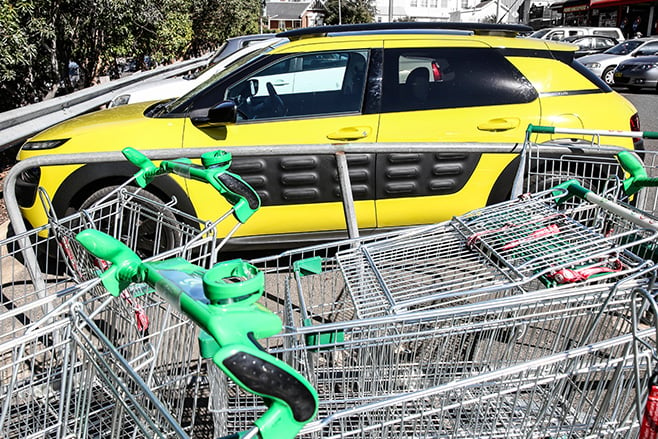
I even know what I’m going to say when they do. “Oh my goodness, I’m so sorry!” they’ll screech, mortified. “It’s okay, you careless duffer,” I’ll reply, “that’s what these bumps are for.” And then I’ll ram the Cactus again just to prove the point.
The Citroen has improved my life in other ways, too. I no longer need to visit petrol stations twice a week, for instance. Regular readers will know my previous long-termer was an HSV Clubsport LSA wagon that, while excellent in almost every way, didn’t so much drink fuel as guzzle it. The Citroen, on the other hand, seems to have a bottomless tank.
My Cactus has the 1.2-litre three-cylinder petrol engine, paired with a five-speed manual transmission, and so far it’s been so frugal that
I’ve only fuelled it once over an entire month. And don’t confuse this efficiency with languid performance; the 81kW/205Nm three-pot is a peach.
And then there’s the design. Some of my friends hate it, but to my eye the Cactus looks brilliant with its quirky round edges and concept-car DRLs. I love the cabin, too, especially the supremely comfortable lounge-like front seats.
However, there have been annoyances, even at this early stage.
There’s no tilt adjustment on the steering wheel, for example, so the driving position feels a little off. And the reversing camera takes twice as long as it should to engage.
And I’m already starting to resent the clumsiness of the central touchscreen that controls everything from phone connectivity to the climate control.
Yet none of these foibles have dulled the Cactus’s initial shine. As the first properly bonkers Citroen in ages, it dares to be different. And I like that. So does the wife.
Update 1: Thorny Issues
Alex starts to get prickly over his Citroen Cactus. Annoyances and niggles that were initially quite minor rise to the fore, now that the honeymoon period has lapsed.
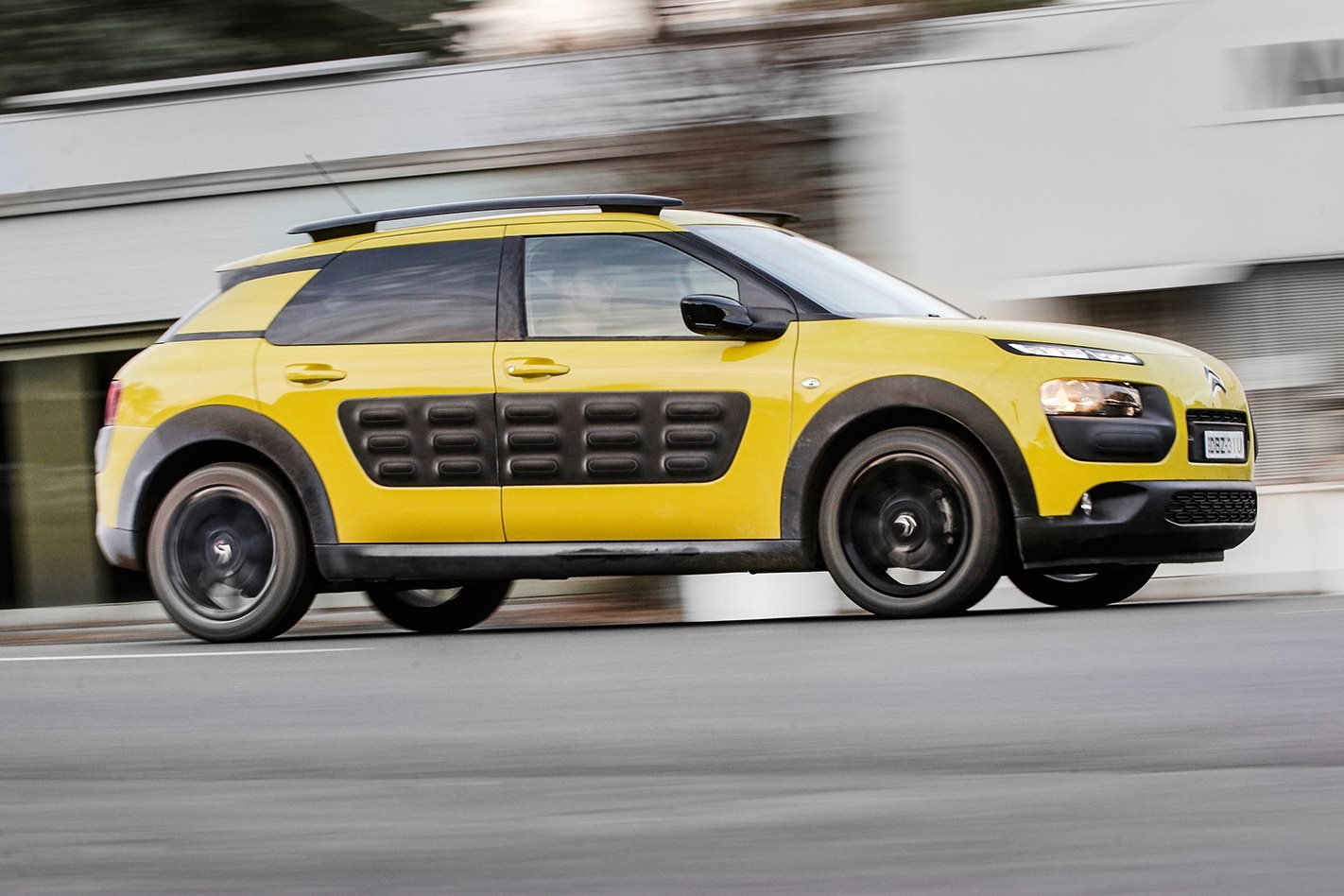
Isn’t it funny how quickly annoyances that were once easily dismissed as small and trivial can manifest into niggles capable of spawning white-hot rage.
Take my Citroen Cactus for example. When it was shiny and new, I didn’t care that its central touchscreen was a bit slow and clunky. Or that it doesn’t have one-touch electric windows, or that its damping isn’t perfect, or that its reversing camera activates at the speed of global warming. And can you blame me? When a car looks this interesting and has an interior this quirky, of course I’d focus on the bigger-picture positives.
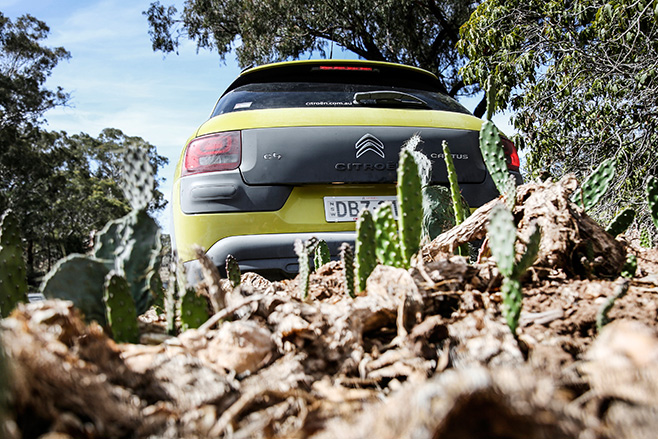
But now we’ve spent eight weeks together, I’m afraid my affection for the shiny yellow Cactus has lost some of its sheen. The touchscreen is of particular annoyance because, unlike the majority of cars, which have physical buttons for important functions, the Citroen’s screen controls everything. Well, everything of significance. Feel like adjusting the temperature? Prepare to dive into the digital menus. Want to change the radio station or turn off the idle-stop? Better start jabbing.
Admittedly, the Cactus isn’t alone in having the infotainment system control most functions, and it wouldn’t be such an issue if the touchscreen worked seamlessly. But sometimes it’s so unresponsive you may as well be fingering your nose.
At least the upside of having fewer buttons is a beautifully stylish and uncluttered dash.
The rest of the interior is also a triumph of design, and clever packaging means it’s not only pleasing to the eye but comfortable and practical, with plenty of handy storage cubbies. I especially love the soft cloth seats, which feel like my grandfather’s lounge chair.
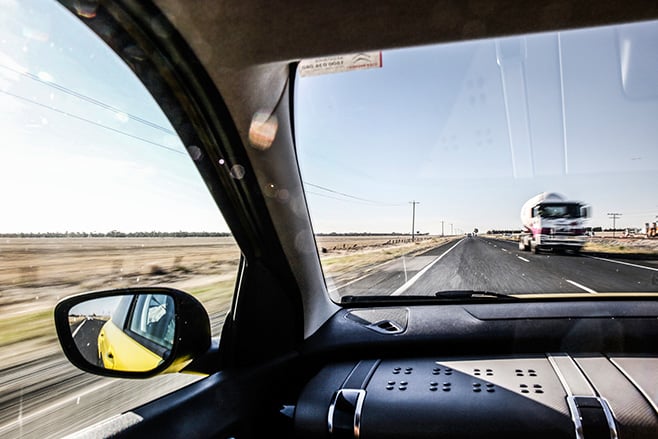
The other shining positive that’s bubbled to the fore is the Citroen’s brilliant turbo triple. I admit stepping out of an HSV Clubsport, which had five times the capacity, was quite an adjustment, but the more I drive the Cactus the more the little 1.2-litre three-pot warms my heart. Outputs of 81kW and 205Nm don’t scream eager performance on paper, but in practise it’s lithe, responsive and wonderfully elastic – factors helped by a 1020kg kerb and leggy gearing. And then there’s the rorty thrum, which only adds to the Cactus’s perky personality.
What I’m yet to explore in detail is the dynamics. Our time together has so far been limited mostly to the freeway, but that’s about to change. Car of the Year testing starts next week and the Cactus is part of this year’s field.
Fashion fail
If the cliche ‘Happy wife, happy life’ holds true, then the Cactus isn’t doing me any favours. Turns out it doesn’t have a vanity mirror for the passenger, which I’ve learned is an unforgivable oversight. The driver does get a mirror, complete with a light, but when I pointed this out it only seemed to make her madder. She’s also not entirely enamoured with the Citroen’s looks, and nor are some of my friends, who bandy about words like “try-hard” and “cutesy”. But what do they know? I reckon the Cactus looks great.
Update 2: Conclusion
The Citroen Cactus’s concept-car styling is a brave breath of fresh air in today’s same-same market, although we could do without the bug splatter.
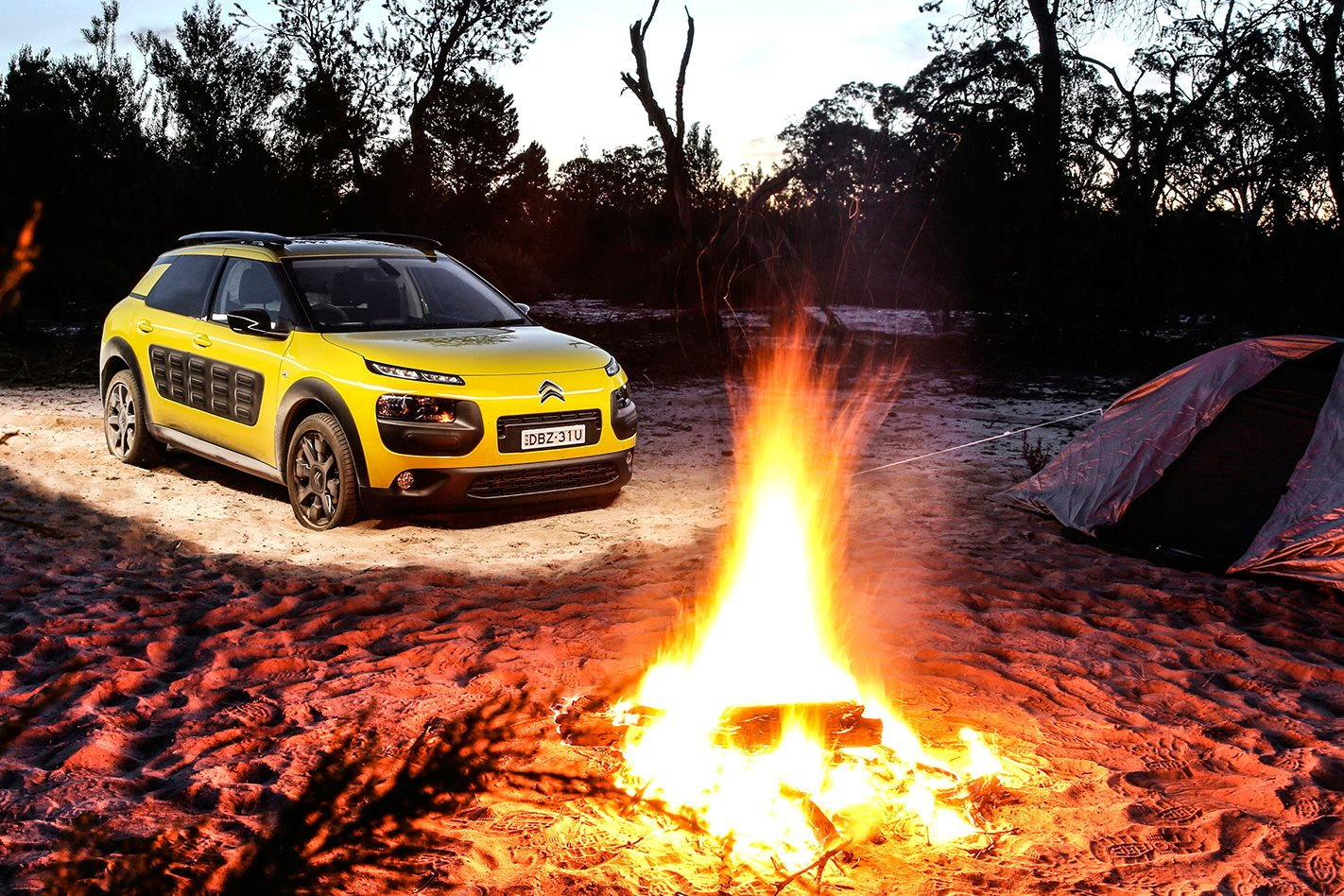
AND just like that, it was gone. Having left for a global launch in Portugal with our bright-yellow Citroen Cactus parked firmly on my street, I arrived back to find an empty space, the car having been whisked away by the Wheels crew and returned to Citroen.
Turns out someone wanted a yellow Cactus with the sweet-shifting manual and perky 1.2-litre petrol triple so desperately that Citroen sold mine from under me. I’m told it was destined to be someone’s Christmas present which was great, as long as they didn’t mind a few bugs and flies. When it left, the Citroen’s nose was covered in them, its last journey in my care having been a frantic four-up last-minute dash from Melbourne to Mildura to attend a family funeral.
With nothing larger at hand, I’d crammed the wife, my sister, her boyfriend and the family dog into the Cactus for the 1200km round trip and, despite my wife’s “you’re kidding me, right?” glare as we all stood on the footpath and prepared to climb in, we fitted with ease. In fact, despite the occasional lob of dog spit, I’d say all four (or five) of us were supremely comfortable.
A lot of this is down to the Citroen’s lounge-like seats, which have soft cushions and, in the second row, offer excellent under-thigh support. There’s an impressive sense of space, too, helped by the low window line and huge, single-piece panoramic roof, which is a must-have $1250 option.
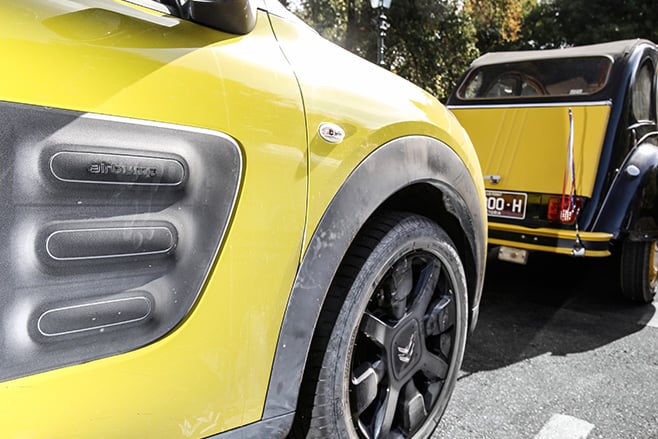
Stretching the Cactus’s legs on the freeway deepened my affection for its charming drivetrain. With the cruise set to 110km/h, it loped along with refined grace, yet was elastic enough to deliver swift and decisive overtakes around the many trucks littering the dual-carriageway, sometimes without needing to change down from top.
Long stints at three figures also reinforced the engine’s excellent economy, though not by as much as I’d expected. After months of returning fuel readings in the high fives and low sixes in heavy city traffic, I’d hoped the Cactus would sip substantially less on the open road. But with four (or five) bodies on board and its square, bug-catching front end punching a hole in the air, the best it achieved was 5.6L/100km.
Less desirable was an annoying amount of road noise on coarse-chip surfaces, and the steering, which wandered at freeway speeds and needed constant correction to remain in the centre of the lane.
Still, the ease with which the Cactus chewed up the country miles cemented the depth of its ability, both as a frugal city runabout and surprisingly spacious long-distance hauler.
It’s not perfect, of course. I’ve complained about the finicky touchscreen before, and the decision to only offer the 1.2-litre petrol with a manual transmission is terribly short-sighted in auto-fixated Australia.
For now, the only auto Cactus available is the 1.6L diesel, which uses a slow and jerky semi-automated six-speed. Little wonder then, that Citroen only sells a handful of Cacti each month.
Yet somehow the Citroen’s personality overcomes these faults. Its quirky, concept-car styling is a brave breath of fresh air in today’s same-same market and I hope the new owners appreciate it as much as I did, bugs and all.




